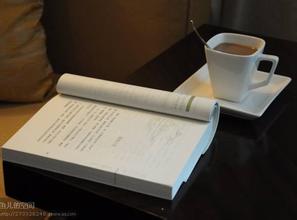Introduction to the grinding scale of Yega Ficher flavor coffee bean description variety production area treatment method
Description of coffee beans Yegashefi Kocher Flavor Variety of origin Area of treatment Method of grinding Scale Introduction
Yerga Sherphine itself is a small town with a population of about 20,000. The three neighboring small producing areas Wenago, Kochere and Gelena Abaya are also classified as Yerga Sherphine because the flavor of coffee produced is almost identical to Yerga Sherphine. Yerga Coffee is culturally and geographically similar to its neighbors, but Yerga Coffee seems to be blessed with exceptional conditions. Top quality Yerga Coffee has floral, bright citrus fruit, lemon notes and silky soft taste.
Kochere Kochere is located in south-west Ethiopia, about 25 miles north of the famous town of Yegachefi, and its production model is based on local smallholder farmers sending batches of output to cooperatives for centralized processing. Chalalacktu village has about 100,000 people who depend on coffee for their livelihood, and related production activities have become their main source of income. Due to the income from coffee production, the local living standard is much better than that of many Ethiopian villages, and there are complete health facilities, higher schools, etc. Advanced processing equipment allows Kochere coffee to perform at a high level in the washed field, with molasses and citrus complex tones clean and sweet
In February 1977, Lieutenant Colonel Mengistu Haile Mariam launched a military coup and became chairman of the Provisional Military Administrative Council and head of state. In 1979, the "Ethiopian Working People's Party Organizational Committee" was established with military personnel as the main body, and a one-party system was implemented. In 1984, the "Ethiopian Workers 'Party" was formed according to the Soviet Communist Party model. In September 1987, Mengistu announced the dissolution of the Provisional Military Administrative Council, the end of military rule, the establishment of the People's Democratic Republic of Ethiopia, and the establishment of a new parliament, Mengistu as president and head of government.
In March 1988, the rebel Eritrea People's Liberation Front (EPLF) and Tigray People's Liberation Front (TPLF) launched an attack on government forces, and a large-scale civil war broke out. In 1989, the "Eritrea People's Liberation Front" occupied most of Eritrea. On May 28, 1991, the EPRF army dominated by the "Tigray People's Liberation Front" entered Addis Ababa, and the Mengistu regime was declared collapsed.
Yegashefi's coffee trees were cultivated by European monks (a bit like Belgian monks growing wheat to brew beer) and later by farmers or cooperatives. Yerga Shefi is actually constructed by surrounding coffee communities or cooperatives, including Idido, Harfusa, Hama, and Biloa near Misty Valley, all washed, but a small number of unique beans are deliberately sunburned to enhance the charming fruity flavor and body. These mountain villages are foggy, spring all year round, cool but not hot in summer, rain but not damp in winter, and they have a unique regional flavor of citrus and flowers. Coffee trees are mostly planted in farmers 'backyards or mixed with other crops in the field. The yield per household is not much. It is a typical pastoral coffee. The Yejia Shefei award-winning beans are almost from the above coffee villages and communities

Important Notice :
前街咖啡 FrontStreet Coffee has moved to new addredd:
FrontStreet Coffee Address: 315,Donghua East Road,GuangZhou
Tel:020 38364473
- Prev

Introduction to the description of taste and flavor of Colombian coffee bean red wine
Description of taste and flavor of Colombian coffee bean red wine according to Sasa's description in the competition, the processor injected carbon dioxide into the container to prevent oxidation from producing volatile acid, which is called lactic acid fermentation, which produces malic acid and lithic acid, which is relatively stable, so the beans fermented by lactic acid feel more mellow, with cheese.
- Next

Description of the flavor of Panamanian coffee beans with moderate sour and bitterness introduction to the taste of varieties treated by grinding scale
The first batch of coffee exported by Panama each year starts in November, and almost all high-quality coffee beans are shipped to France and Finland. Generally speaking, the price of Panamanian coffee belongs to the low and medium price, but its performance in the cup is often as good as that of any famous or even expensive coffee producing area. The selling price of Panamanian specialty coffee is among the highest in the international market.
Related
- Detailed explanation of Jadeite planting Land in Panamanian Jadeite Manor introduction to the grading system of Jadeite competitive bidding, Red bid, Green bid and Rose Summer
- Story of Coffee planting in Brenka region of Costa Rica Stonehenge Manor anaerobic heavy honey treatment of flavor mouth
- What's on the barrel of Blue Mountain Coffee beans?
- Can American coffee also pull flowers? How to use hot American style to pull out a good-looking pattern?
- Can you make a cold extract with coffee beans? What is the right proportion for cold-extracted coffee formula?
- Indonesian PWN Gold Mandrine Coffee Origin Features Flavor How to Chong? Mandolin coffee is American.
- A brief introduction to the flavor characteristics of Brazilian yellow bourbon coffee beans
- What is the effect of different water quality on the flavor of cold-extracted coffee? What kind of water is best for brewing coffee?
- Why do you think of Rose Summer whenever you mention Panamanian coffee?
- Introduction to the characteristics of authentic blue mountain coffee bean producing areas? What is the CIB Coffee Authority in Jamaica?

